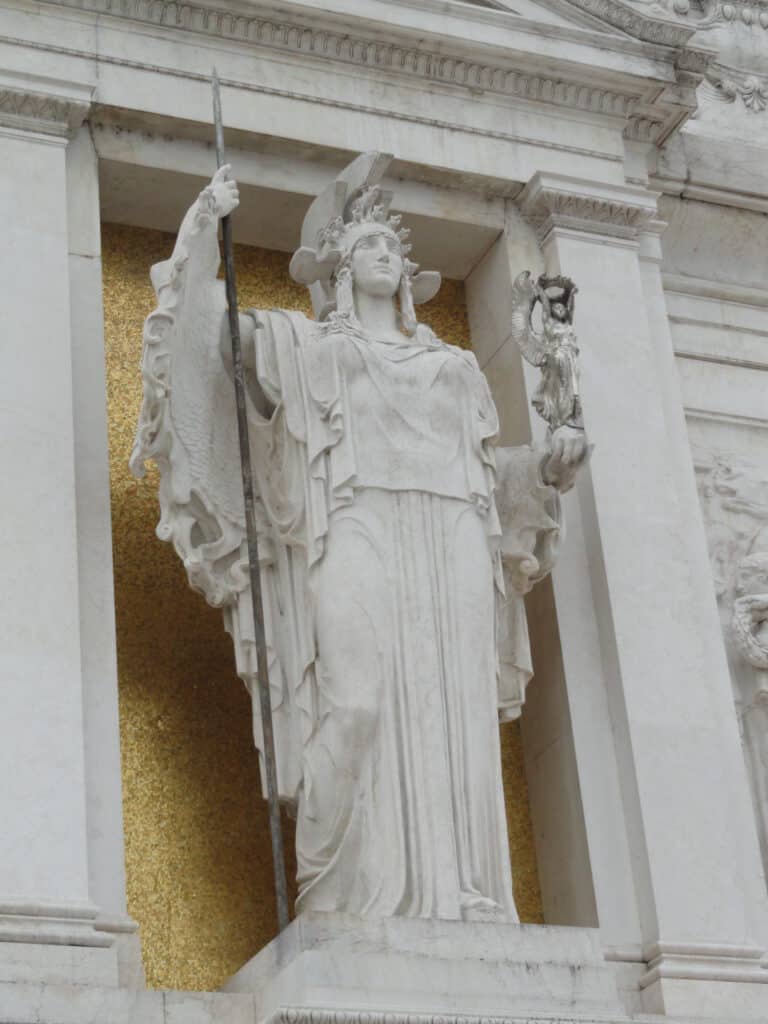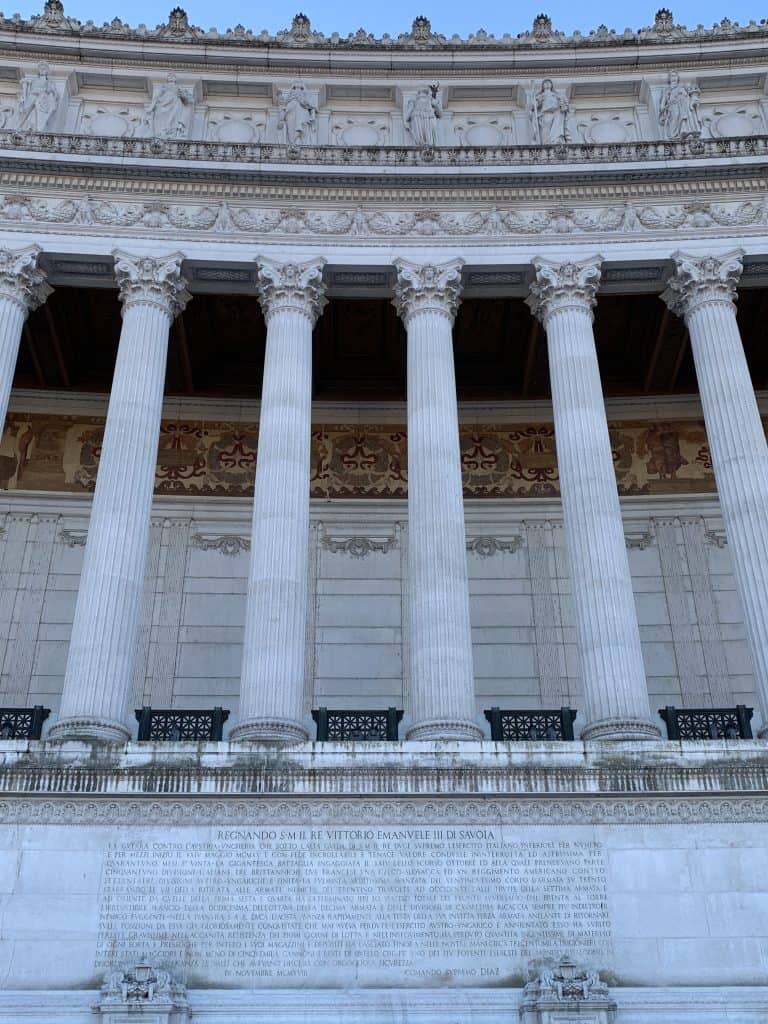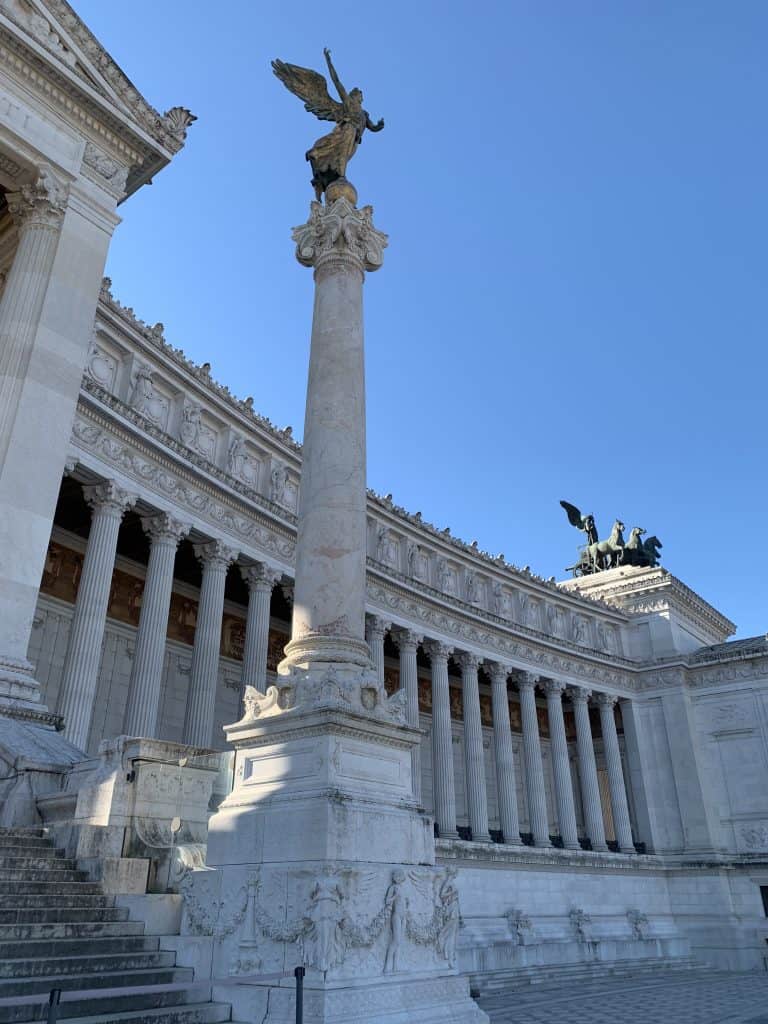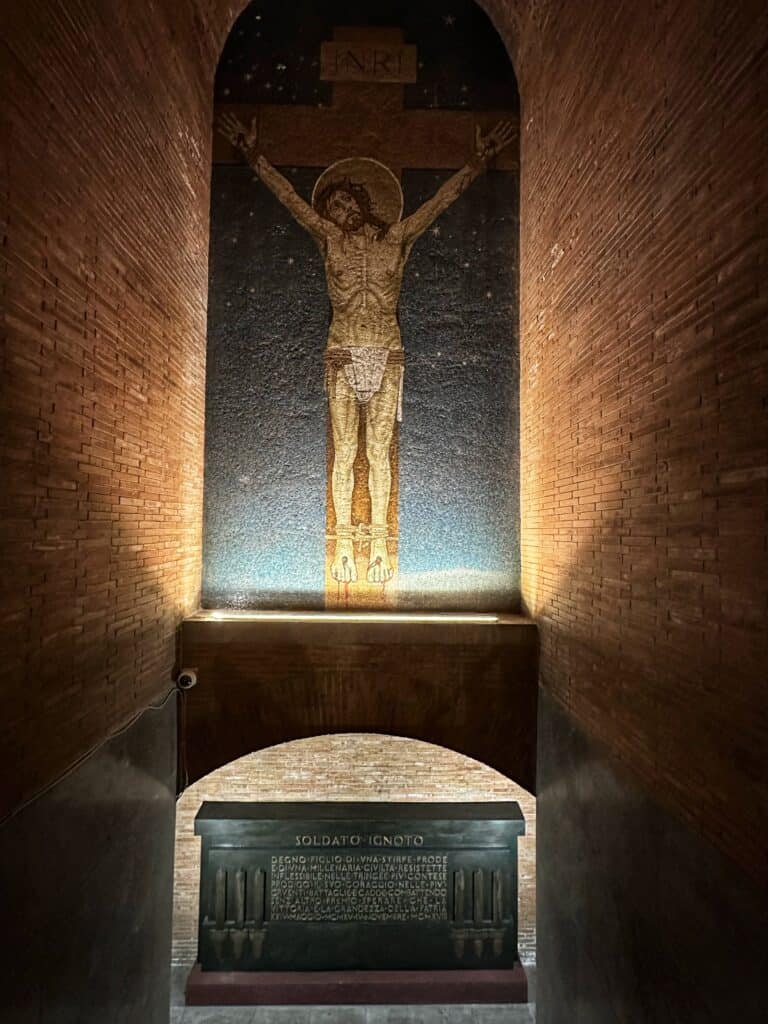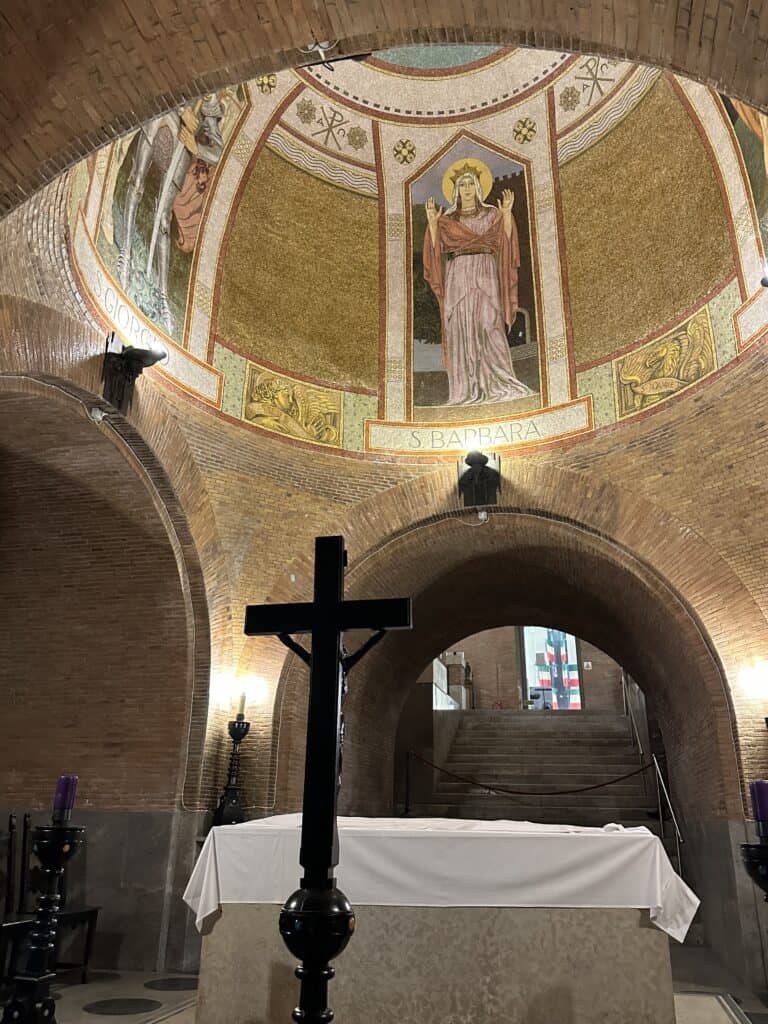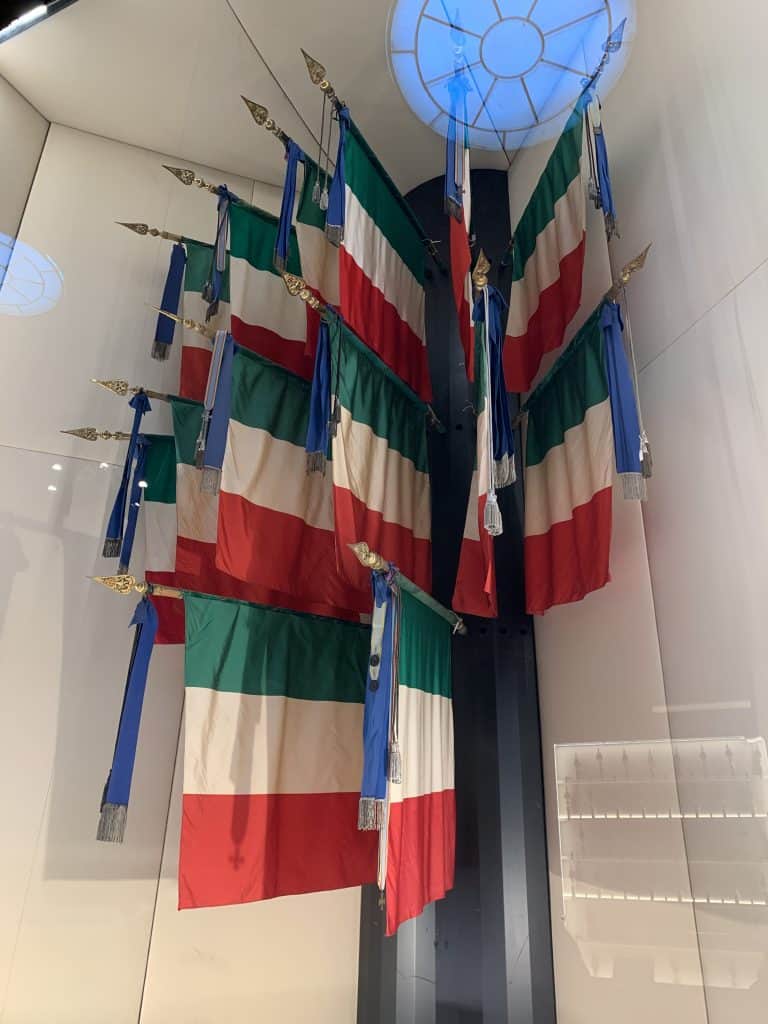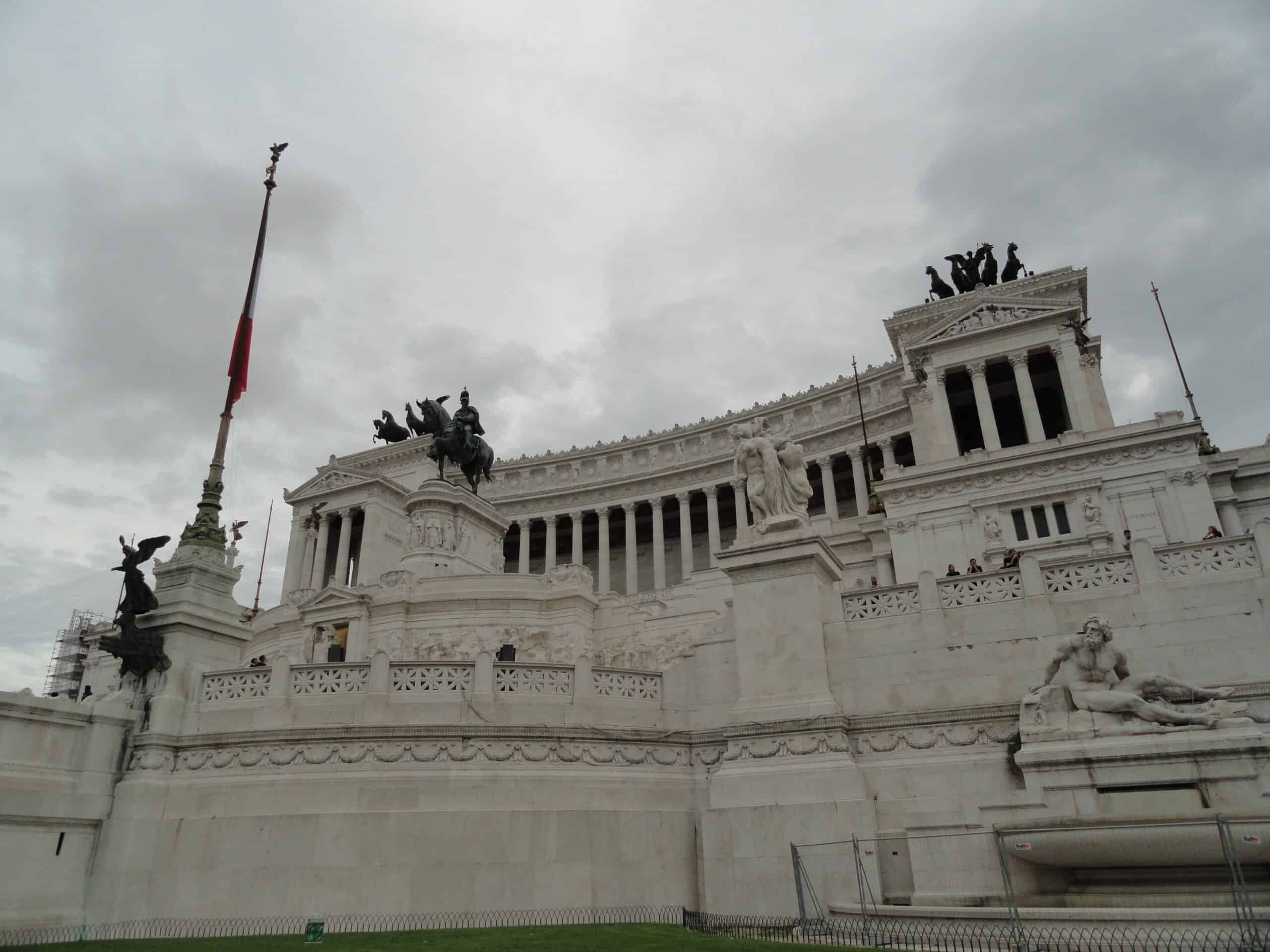
The National Monument to Vittorio Emanuele II is indicated with two other expressions: “Mole del Vittoriano” and “Altare della Patria“, which from the inauguration to today are the most used to define the monument.
International competitions were held for the construction of the Altare della Patria, one in 1880 and one in 1882, but in the end the project by Giuseppe Sacconi was chosen.
Initially the monument was to be made of travertine but was later replaced with the very white Botticino from Brescia. To give greater value and visibility to the monument, the medieval and Renaissance quarters, the Tower of Paolo III and the Ara Coeli convent were also demolished.
The structure of the Altare della Patria is built according to an ascending path that, through terraces and stairways, rises to the lateral temples up to the imposing neo-classical style portico with a Corinthian colonnade, surmounted by the bronze quadrigas representing the allegory of the Unity of the Fatherland and of Liberty. There are also two fountains thatrepresent respectively the Adriatic coast (Leone di San Marco) and the Tyrrhenian coast (Lupadi Roma and sirena Partenope).
On June 4th 1911, the imposing equestrian statue of King Vittorio Emanuele II made of gilded bronze was added to the Altare della patria on the occasion of the International Exhibition for the 50th anniversary of the Unification of Italy.
In 1921 when the Unknown Soldier (read the story here) was buried under the statue ofthe Goddess Roma in the part of the Vittoriano it was called “Altare della Patria”.
Even if the Altare della Patria constitutes only a part of it, often the entire complex of the Vittoriano also identified with this name.Inside the Altare della Patria is the Museum of the Risorgimento which also includes the Shrine of the Flags, a place where the war flags of the dissolved military units, naval units, the banners of military institutes and armed corps of the State are collected and kept.

